
Figure 1 from Reninangiotensin system, hypertension, and chronic kidney disease
The renin-angiotensin-aldosterone system is a series of reactions designed to help regulate blood pressure. When blood pressure falls (for systolic, to 100 mm Hg or lower), the kidneys release the enzyme renin into the bloodstream.

Function of ReninAngiotensinAldosterone System (RAAS) flowchart Raas System, Renin Angiotensin
Introduction. The renin-angiotensin-aldosterone system (RAAS) attempts to maintain arterial blood pressure by controlling blood volume. a decrease in arterial blood pressure is sensed by the kidneys as decreased renal perfusion pressure. this in turn stimulates the juxtaglomerular cells to secrete renin into circulation.

The ReninAngiotensinAldosterone System, RAAS, Animation Mẹo Hay 360
The classical view of the renin-angiotensin system (RAS) is that of the circulating hormone pathway involved in salt and water homeostasis and blood pressure regulation. It is also involved in the pathogenesis of cardiac and renal disorders. This led to the creation of drugs blocking the actions of this classical pathway, which improved cardiac.

Simplified chartflow of the reninangiotensin pathway Download Scientific Diagram
renin-angiotensin system, physiological system that regulates blood pressure.. Renin is an enzyme secreted into the blood from specialized cells that encircle the arterioles at the entrance to the glomeruli of the kidneys (the renal capillary networks that are the filtration units of the kidney). The renin-secreting cells, which compose the juxtaglomerular apparatus, are sensitive to changes.

How does Renin activate Angiotensin? Renin angiotensin
The renin-angiotensin-aldosterone system (RAAS) is an essential component of blood pressure regulation that acts to increase blood volume and increase systemic vascular resistance. 1 This system is dependent on hormonal changes which induce transcription of genes to produce vasoactive proteins, making it a slower means of controlling blood.
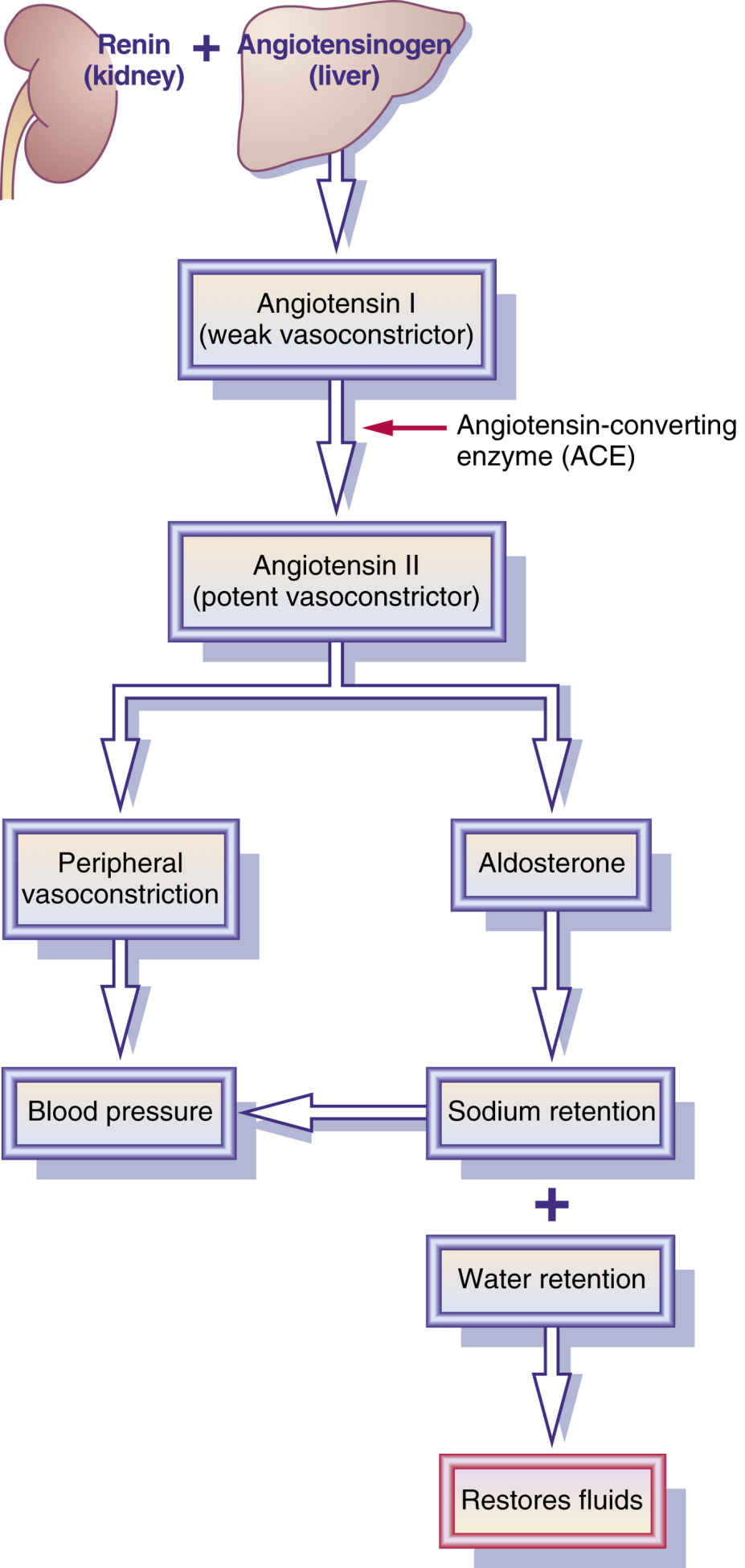
Antihypertensives Basicmedical Key
Both receptors are key components of the rennin-angiotensin system (RAS), which regulates blood pressure and electrolytes [65,66]. The aberrant function of RAS is essentially associated with.
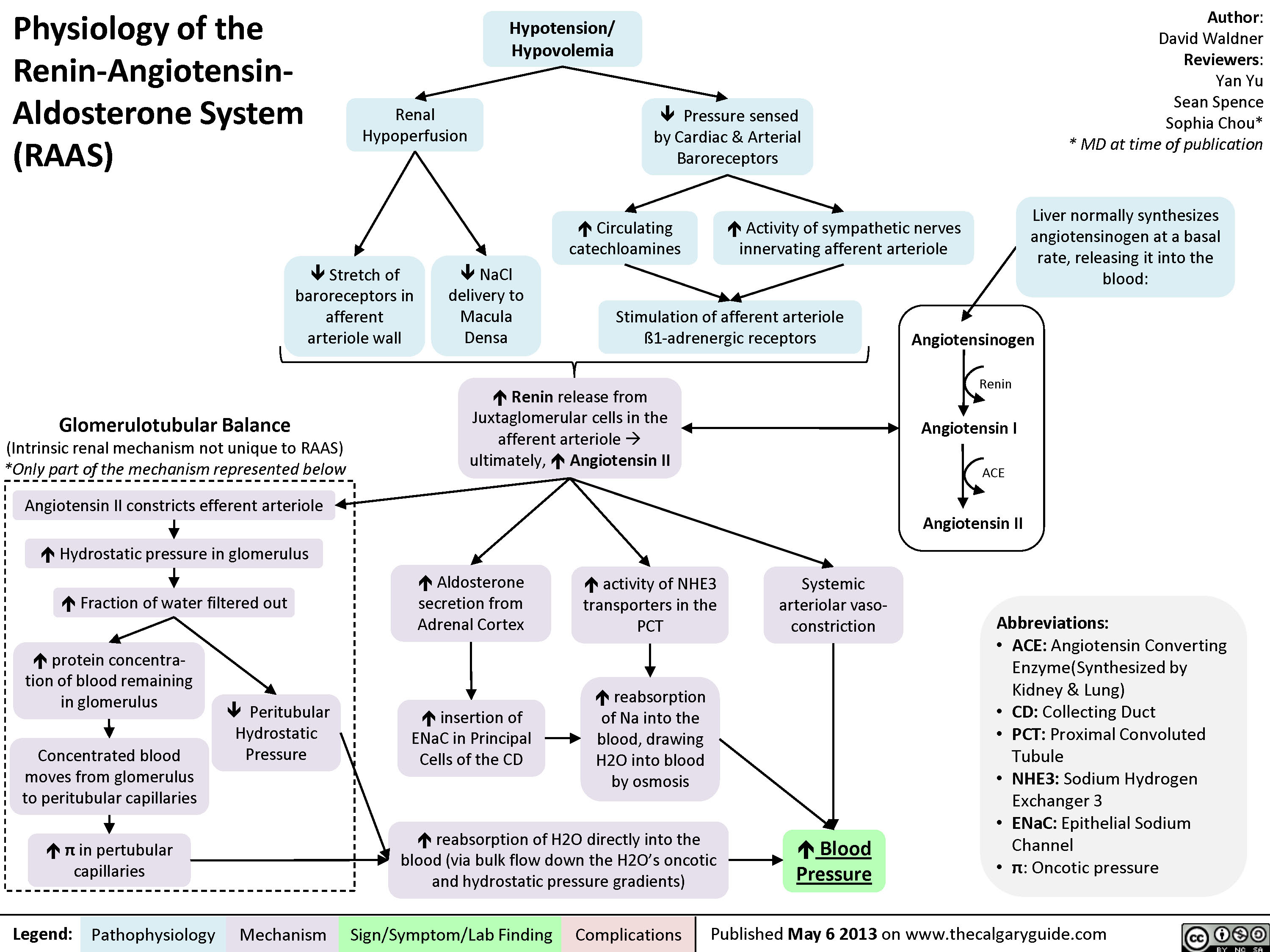
Physiology of the ReninAngiotensinAldosterone System (RAAS) Calgary Guide
The Renin-Angiotensin-Aldosterone System (RAAS) is a crucial mechanism for blood pressure control in the body. Learn how juxtaglomerular cells in the kidneys release renin in response to low blood pressure, triggering a cascade of hormones that ultimately raise blood pressure. Rishi is a pediatric infectious disease physician and works at Khan.

Renin Angiotensin Aldosteron System (RAAS) with flow chart by DoctScape YouTube
Renin-Angiotensin-Aldosterone System. The Renin-Angiotensin-Aldosterone System (RAAS) is a hormone system within the body that is essential for the regulation of blood pressure and fluid balance. The system is mainly comprised of the three hormones renin, angiotensin II, and aldosterone. Primarily it is regulated by the rate of renal blood flow.

FileReninangiotensinaldosterone system.png
The renin-angiotensin-aldosterone system (RAAS) is a critical regulator of blood volume and systemic vascular resistance on a long-term basis. The baroreceptor reflex, on the other hand, responds in a short-term manner to decreased blood pressure. Arterial baroreceptors inform your autonomic nervous system of minor or rapid beat-to-beat.

Mineralocorticoid function, mineralocorticoid excess or deficiency causes & symptoms
The renin-angiotensin system (RAS) plays a crucial role in the regulation of renal, cardiac, and vascular physiology, and its activation is central to many common pathologic conditions including hypertension, heart failure, and renal disease. An overview of the normal function of the system, as well as ramifications of its dysfunction.
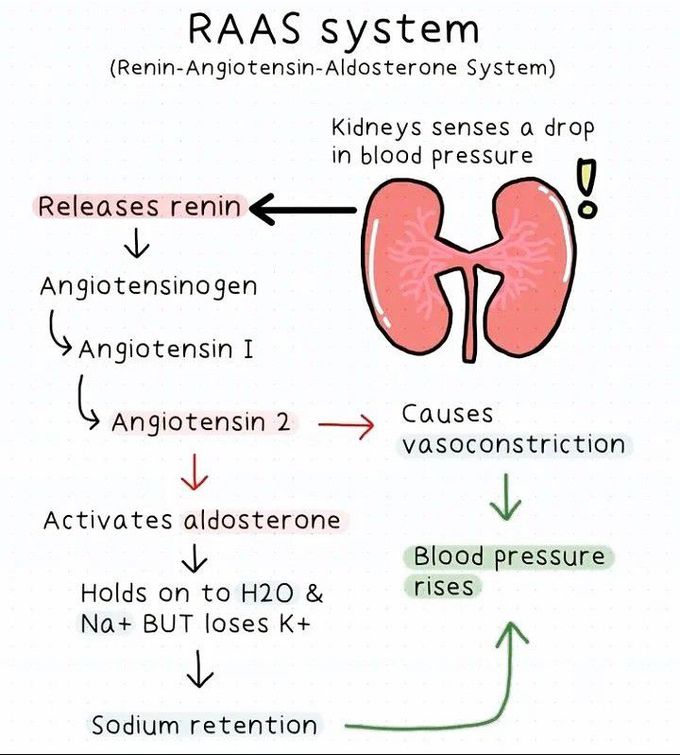
Renin Angiotensin Aldosterone System MEDizzy
The renin-angiotensin-aldosterone system (RAAS) is a critical regulator of blood volume, electrolyte balance, and systemic vascular resistance. While the baroreceptor reflex responds short term to decreased arterial pressure, the RAAS is responsible for acute and chronic alterations. The classical understanding of RAAS is that it comprises three significant compounds: renin, angiotensin II.

Pin on Ενδοκρινικές διαταραχές
The renin-angiotensin system (RAS) is a group of related hormones that act together to regulate blood pressure and control inflammation. It is called a system because each part influences the other parts and all are necessary for the whole to function correctly. The renin-angiotensin system, working together with the kidneys, is a vitally.

223 Renal Pathophysiology, Spring 2006 Tufts OpenCourseWare Paramedic school, Nurse, Medical
The renin-angiotensin-aldosterone system (RAAS) plays an important role in regulating blood volume and systemic vascular resistance, which together influence cardiac output and arterial pressure.As the name implies, there are three important components to this system: 1) renin, 2) angiotensin, and 3) aldosterone. Renin, which is released primarily by the kidneys, stimulates the formation of.

Read More and Download Book immediately The reninangiotensin system (RAAS) The ren… Nursing
The renin-angiotensin system (RAS) is a critical regulator of sodium balance, extracellular fluid volume, vascular resistance, and, ultimately, arterial blood pressure. In the kidney, angiotensin II exerts its effects to conserve salt and water through a combination of the hemodynamic control of renal blood flow and glomerular filtration rate and tubular epithelial cell sodium chloride and.
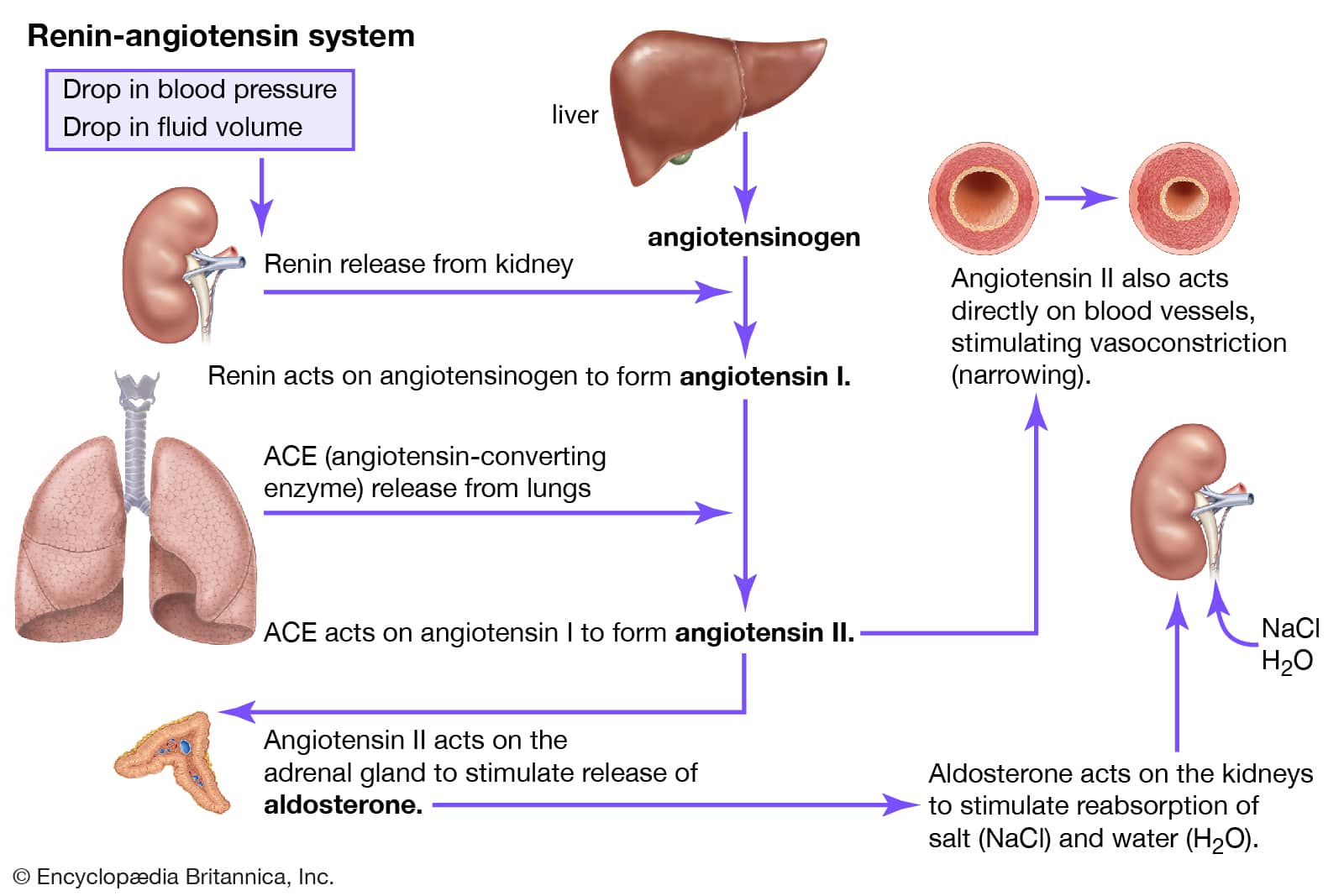
Antihypertensive Drugs Action, Side effects & Benefits explained. — A & T Health
The renin-angiotensin system (RAS), or renin-angiotensin-aldosterone system (RAAS), is a hormone system that regulates blood pressure, fluid and electrolyte balance, and systemic vascular resistance.. Flowchart showing the clinical effects of RAAS activity and the sites of action of ACE inhibitors and angiotensin receptor blockers.
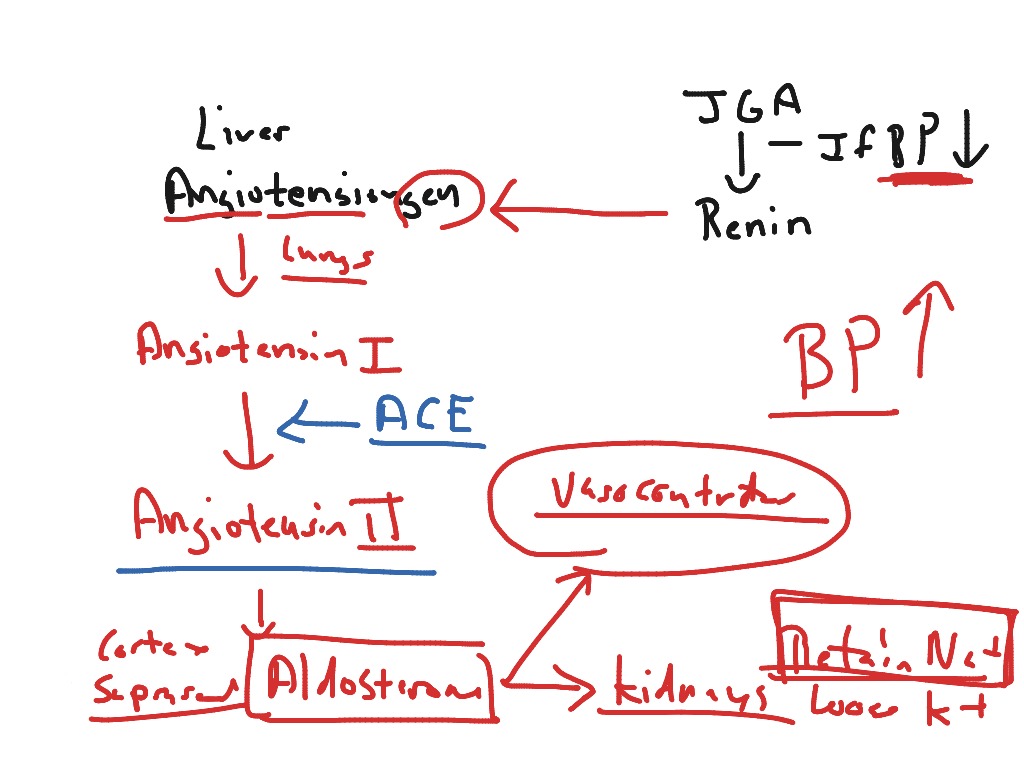
ReninAngiotensinAldosterone System (RAAS) Science, Endocrinology, Cardiovascular, Renin
The renin-angiotensin-aldosterone system (RAAS) plays a pivotal role in the regulation of blood pressure and volume homeostasis, promoting critical structural changes in every component of the cardiovascular system, including the heart and blood vessels. Consequently, the RAAS is a crucial therapeutic target for several chronic diseases of the cardiovascular system, spanning from arterial.